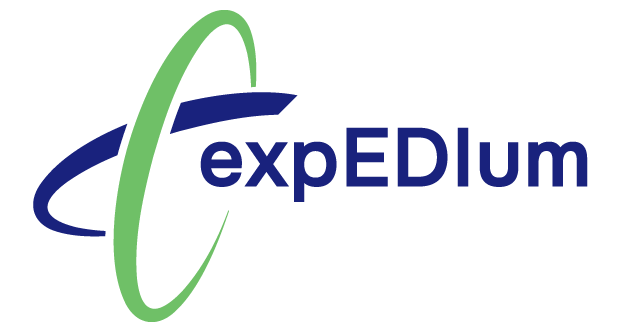Are you feeling overwhelmed while trying to find the right medical insurance billing software among numerous options available in the market? Despite the prevalence of EHRs among certified medical groups, a significant 77% are still relying on paperwork for revenue management, leading to inefficient processes and potential errors. For example, a small practice with three physicians could be handling a 100-page accounts receivable report manually, which can be time-consuming and prone to mistakes.
To address these challenges, investing in medical insurance billing software is a smart and reliable solution. By leveraging technology, healthcare practices can streamline their revenue cycle processes and improve overall efficiency. While there may be initial costs involved, the long-term benefits such as faster claim submissions and quicker approvals can make a significant difference in the practice’s financial health.
In this comprehensive guide, we will provide you with a step-by-step approach to selecting the best medical insurance billing software for your practice. Say goodbye to confusion and welcome a more streamlined and efficient billing process with our expert tips and guidance. Let’s embark on the journey of finding the perfect solution for your practice today!
Introduction to Medical Insurance Billing Software
Medical insurance billing software is a digital solution that automates the process of submitting medical claims to insurance companies. It eliminates manual data entry, reduces paperwork, and speeds up reimbursement from insurance companies. The software also maintains patient records, generates reports, and tracks payment status.
Key Features of Medical Insurance Billing Software
- Claim Creation: With medical insurance billing software, you can quickly create accurate claim forms using patient information stored in the system.
- Electronic Claims Submission: This feature allows you to submit claims electronically to various insurance companies through secure channels instead of mailing paper forms.
- Coding Assistance: The software provides coding assistance by suggesting appropriate codes based on procedures performed and diagnosis codes entered by providers.
- Automated Alerts: You will receive automated alerts when claims are rejected or denied so that they can be corrected or appealed promptly.
- Real-Time Insurance Eligibility Verification: This feature allows you to verify patients’ eligibility before appointments or procedures to avoid claim denials due to non-covered services.
- Claims Tracking: You can track claims throughout the entire submission process – from creation to reimbursement – ensuring timely payments from insurance companies.
Top Benefits of Medical Insurance Billing Software
- Increased Efficiency: By automating time-consuming tasks such as data entry and claim submission, medical insurance billing software improves overall efficiency in your practice.
- Reduced Errors: Manual data entry is prone to errors, which can lead to claim denials and delays in reimbursement. With the software’s coding assistance and automated alerts, you can minimize errors and rework.
- Faster Reimbursement: The software streamlines the billing process, resulting in faster reimbursement from insurance companies.
- Improved Financial Management: Medical insurance billing software provides detailed reports on claims, payments, and outstanding balances, helping you manage your practice’s finances more effectively.
Factors to Consider When Selecting Medical Insurance Billing Software:
- Cost: The cost of the medical insurance billing software is an important factor to consider when selecting one for your practice. It is essential to find a balance between affordability and functionality. While a cheaper option may seem attractive, it’s important to ensure that it meets all the necessary requirements and offers good customer support.
- Compatibility: Before making a decision, it’s crucial to check if the medical insurance billing software is compatible with your current practice management system or electronic health record (EHR) system. This will save you from having to make additional investments in integrating the new software with your existing systems.
- User-Friendly Interface: A user-friendly interface is essential for efficient use of the medical insurance billing software by both you and your staff. Complex interfaces can lead to confusion and errors, which will ultimately affect the revenue cycle management of your practice.
- Features and Functionality: Every medical insurance billing software comes with its own set of features and functionalities designed for specific purposes. Carefully assess your practice’s needs and prioritize which features are necessary for smooth operations. Some key features to look out for include claim submission, real-time eligibility verification, denial management, and automated patient statements.
- Automation capabilities: One of the main reasons for investing in a medical insurance billing software is automation – reducing manual tasks like data entry, claim submissions, and follow-ups can significantly improve efficiency in revenue cycle management. Ensure that the software has robust automation capabilities that meet your practice’s specific needs.
- Coding Capabilities: Accurate coding plays a critical role in getting claims approved by payers on time, leading to timely reimbursement for services provided by healthcare practitioners’ services providers’. As such; it’s imperative to choose a medical insurance billing system that has extensive code libraries updated regularly as per industry standards.
- Customer Support Services: Technical issues can arise at any time while using the medical insurance billing software, and it’s crucial to select a vendor that offers excellent customer support services. This includes timely responses to queries, troubleshooting assistance, and easy access to customer service representatives.
Understanding Your Options
When it comes to medical billing software, you have two primary options: on-premise systems and cloud-based solutions. Each has its pros and cons, catering to different preferences and requirements.
On-Premises Systems:
- Complete Control: With on-premise systems, you have full control over your infrastructure and customization options.
- Data Security: Your sensitive patient data remains within your physical premises, enhancing security.
- Upfront Costs: However, setting up and maintaining on-premise systems can come with significant initial costs and ongoing expenses.
- Accessibility Challenges: Remote access and scalability might be limited compared to cloud-based solutions.
Cloud-Based Solutions:
- Accessibility Anywhere: Cloud-based systems offer the flexibility of accessing your billing data from anywhere with an internet connection.
- Scalability and Flexibility: They can easily scale with your practice’s growth without major infrastructure changes.
- Cost-Effectiveness: Many cloud-based solutions operate on subscription models, reducing upfront costs and maintenance burdens.
- Security Measures: Modern cloud solutions prioritize data encryption and comply with industry regulations for data protection.
Embracing Innovation with expEDIum
Choosing the right medical insurance billing software is crucial for the efficiency and accuracy of your practice. As you evaluate your options, carefully consider the benefits of a user-friendly interface, customizable features, and robust support just like how expEDIum can enhance your practice’s billing efficiency and accuracy.
Sign up for a free trial or schedule a demo to see for yourself how expEDIum can improve your efficiency, accuracy, and overall success in medical billing. Simplify your billing process with the right tools at your disposal. Let expEDIum be your trusted partner in healthcare billing excellence.

